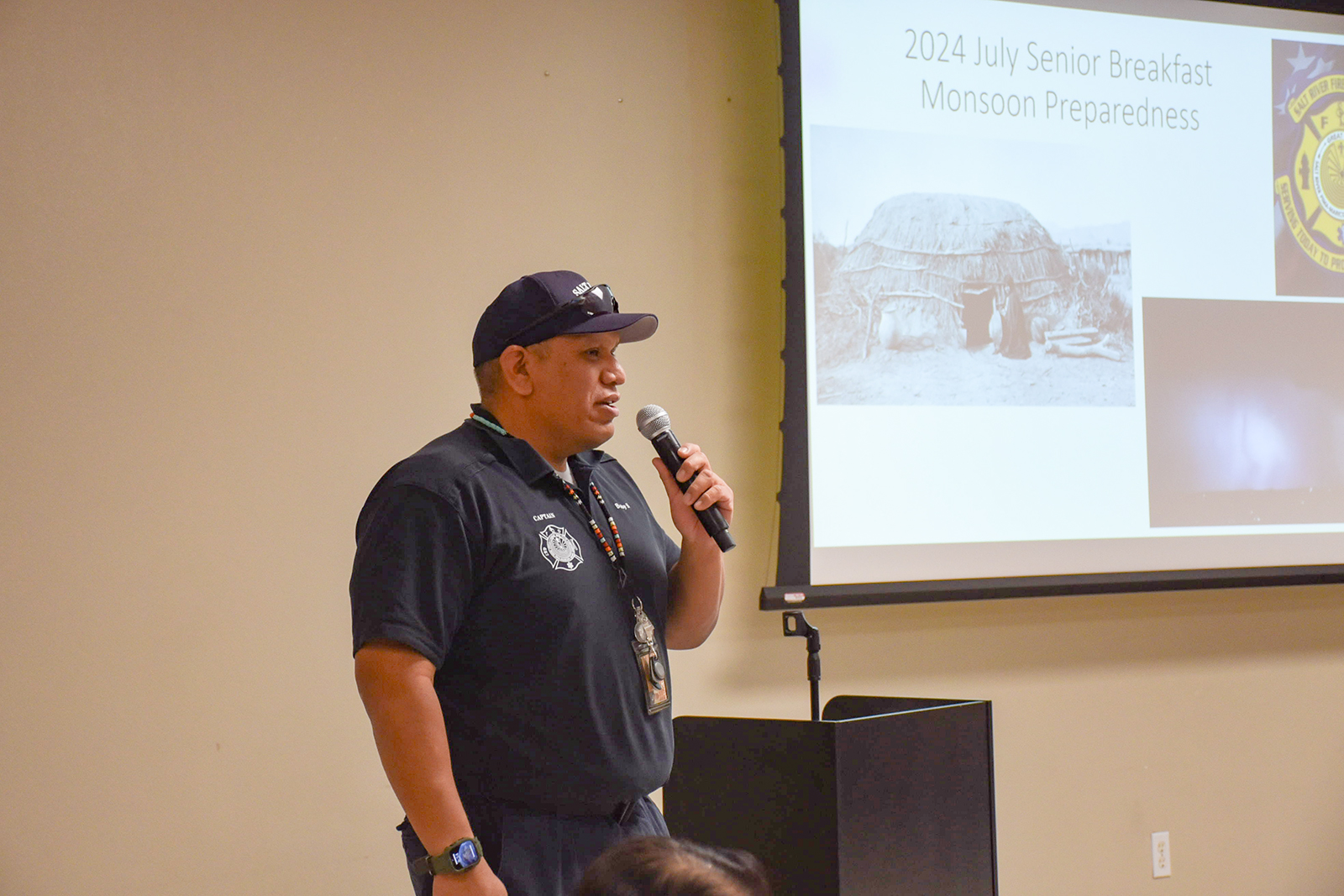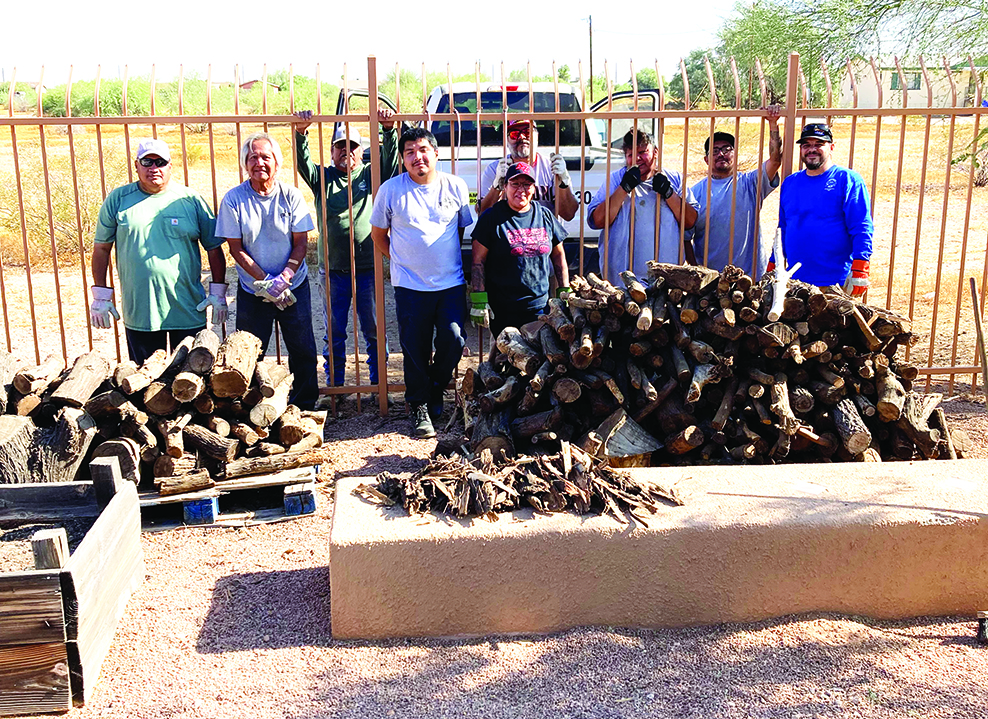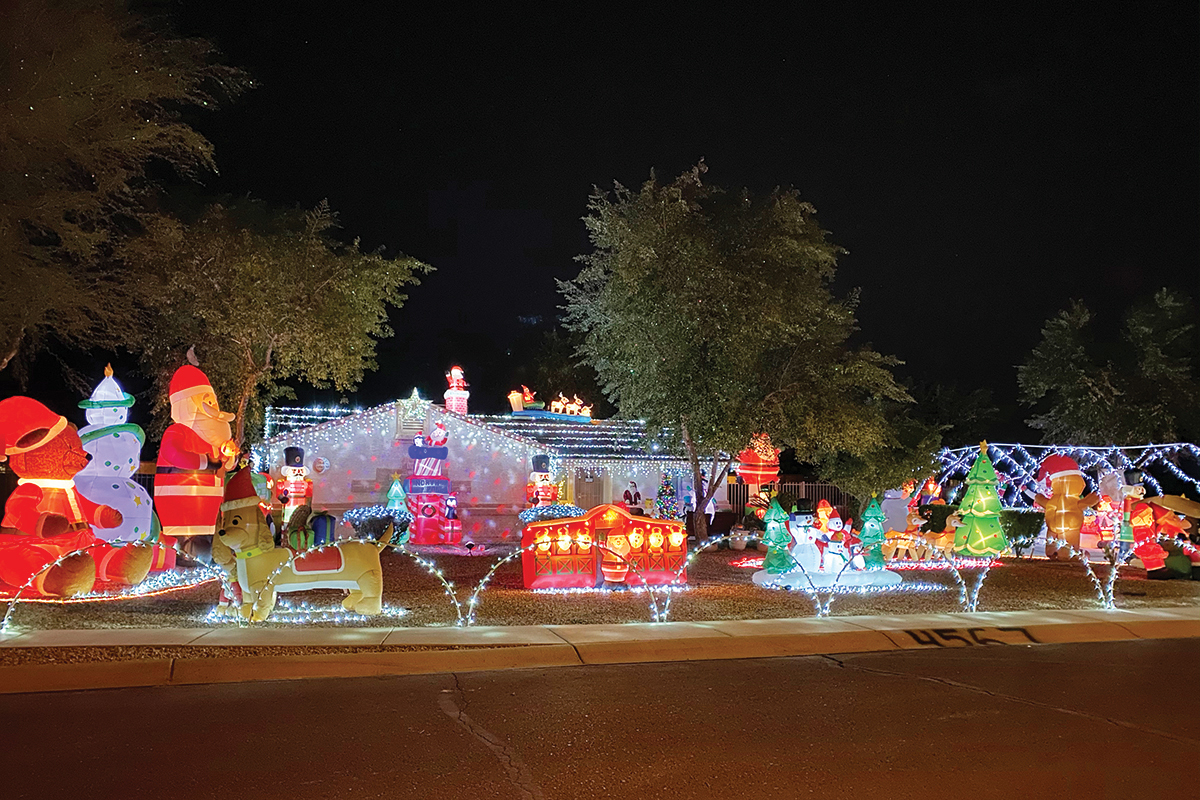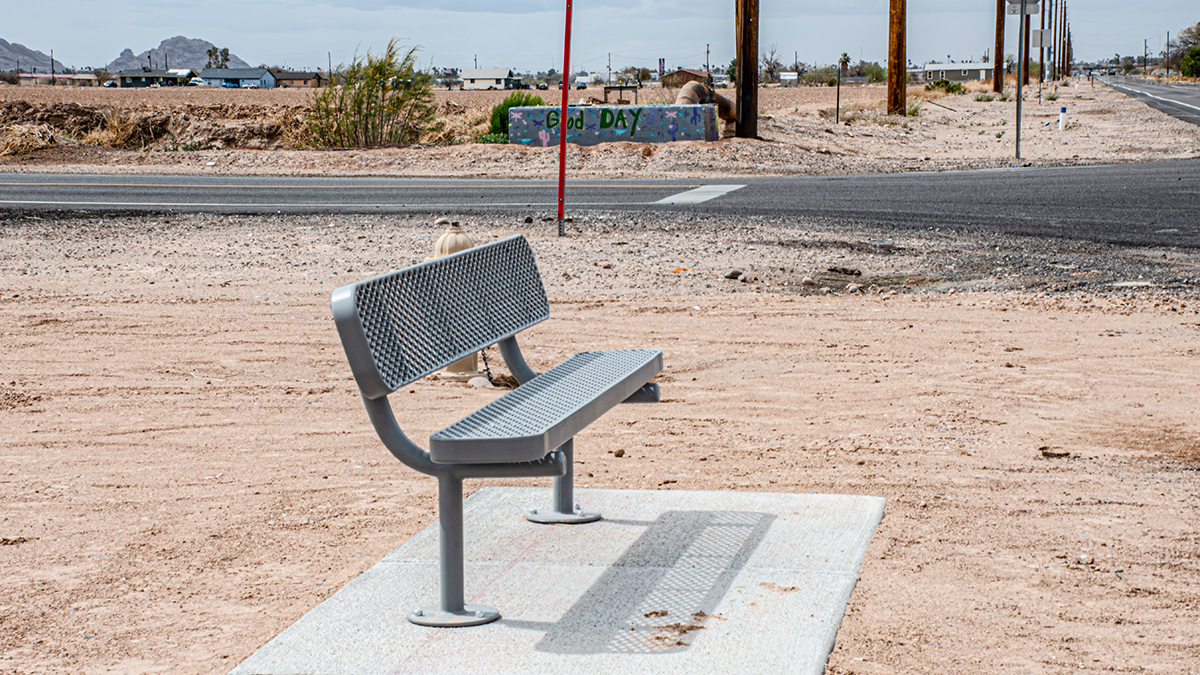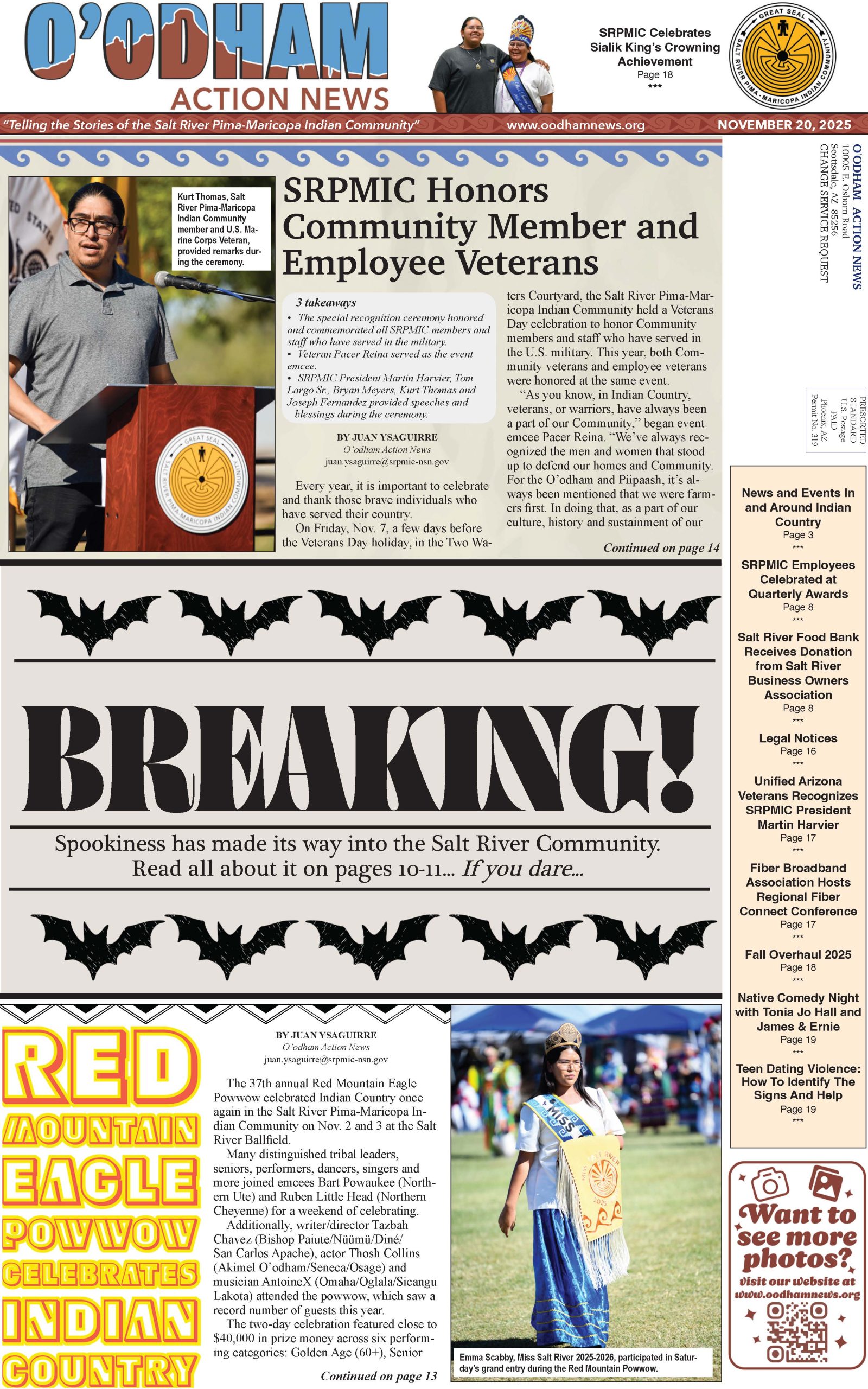VIEWS: 1234
September 12, 2024Staying Safe and Prepared During the Summer and Monsoon Seasons
So far, this summer has been scorching in the Valley of the Sun, with no end in sight. In June, Phoenix broke a record high when Sky Harbor Airport registered a temperature of 118 degrees, breaking the previous record of 115, which was set in 1983. With many weeks still left to go this summer, the Salt River Pima-Maricopa Indian Community continues to assist and inform membership on how to stay safe.
At the Senior Breakfast at the Lehi Community Center on July 3, SRPMIC Fire Department Fire Captain Robert Scabby gave a presentation about staying safe during the hot summer and stormy monsoon seasons. “We’re in monsoon season now; you can tell with the clouds. And in my opinion, I think the storms are getting stronger,” he said.
In July 2022, a particularly strong microburst unleashed heavy rainfall and high winds in the East Valley, severely impacting the Salt River and Lehi areas with downed power lines, flooding and road closures. Since then, the Community has made it a point to improve communication and continue educating members and staff on how to remain prepared during the summer heat and monsoon season.
Remaining hydrated is an essential aspect of prevention and is a key component of a healthy lifestyle. Becoming dehydrated in the Arizona summer heat can result in low blood pressure combined with a high heart rate, dizziness, dark urine, poor coordination, loss of concentration and more. The SRPMIC Emergency Management Department suggests sipping cool water, wearing loose clothing, and staying indoors or in the shade. Heat exhaustion can lead to a stroke and cause permanent damage to the body.
To make it through a prolonged power outage (more than 12 hours), Captain Scabby detailed the importance of setting aside a supply of non-perishable food and plenty of water. It’s also important to have a fully stocked first-aid kit on hand.
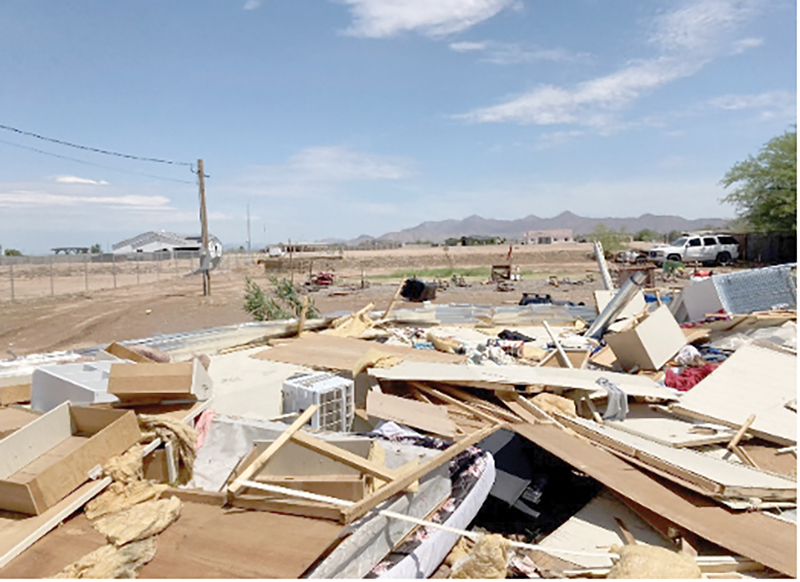
In some emergencies people may be required to leave their homes for a short time, perhaps up to three days (72 hours). This is when you should have a “go bag,” a backpack or other carrier stocked with vital items that you can grab at a moment’s notice. In addition to a first-aid kit, your emergency items should include some non-perishable snacks, a supply of water for each person, flashlights, batteries, a radio and blankets. The SRPMIC Emergency Management department suggests making sure all prescription medications are accounted for, as well as baby food, a change of clothing, diapers and toys for the little ones, plus food, toys, a leash, water and food dishes, and other items for pets. Have your driver’s license, other ID and important papers, and a small supply of cash for unexpected purchases you may need to make.
In case of flooding, SRPMIC members can call the Salt River Fire Department at (480) 208-2154 to make arrangements for sandbags. Sandbags are available for pickup at Station 291 (Osborn), Station 292 (Lehi) and Station 294 (Indian School).
For additional questions regarding emergency preparedness, email SRPMIC Emergency Management at emergency.management@srpmic-nsn.gov. For emergencies, always call 911. For non-emergency assistance in the Community, call the SRPMIC Police/Fire dispatch center at (480) 362-7290.

